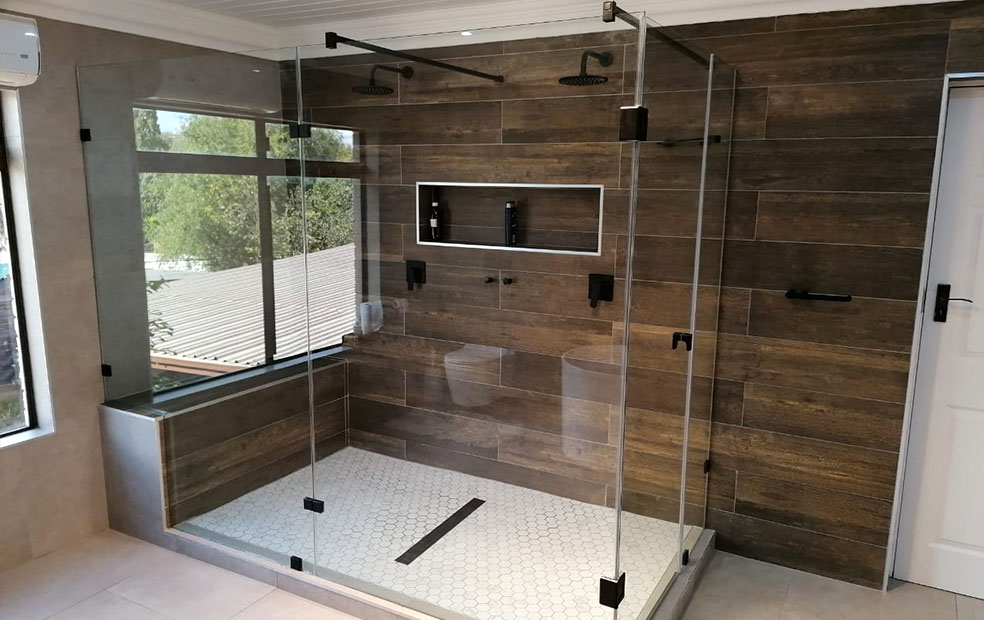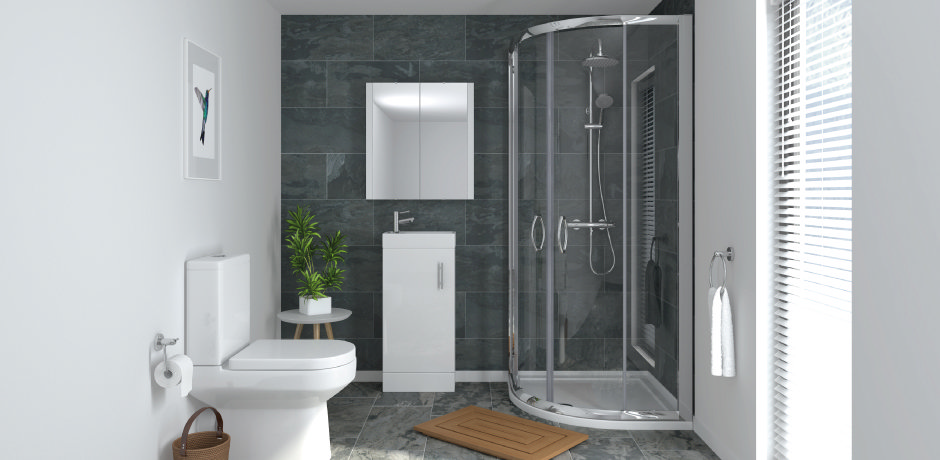The author is making a few great points on the subject of How to Install a Direct-to-Stud Shower Enclosure overall in this post underneath.

A successful shower installment requires mindful planning as well as a great deal of work. Most of the times, you will certainly need to do 3 sorts of tasks: mounting walls, setting up the plumbing, and also finishing walls.
Various Types of Shower Units
- Push-on Mixer: The hose pipe and also spray parts of the push-on mixer shower unit can be linked to the bath faucet as per your requirement, as well as the water temperature level can be adjusted by means of the faucets. Push-on mixers are cheap and very straightforward to install. Nevertheless, although the pipe link is simple, it is quickly displaced. In addition, it is inconvenient to change the temperature level.
- Bath/Shower Mixer: The tube and spray of this kind of shower are integrated with a bathroom mixer faucet, and the temperature can be changed with the bathroom faucets. It is a very low-cost choice and also no added plumbing is involved. However, the bath/shower mixers likewise experience bothersome temperature level control alternatives.
- Manual Mixer: The hose and spray of a hands-on mixer shower system belong of the wall surface device and also the cold and hot water products are linked to a single valve The temperature as well as pressure of the water are managed with either one or a range of handles (in a lot more pricey showers). Although temperature level control is a lot easier in hand-operated mixer kinds, they are extra pricey than the formerly stated mixers. They additionally call for added plumbing of cold and hot water system pipes.
- Thermostatic Mixer: The hose pipe as well as spray of this shower type belong of the wall surface device and also the cold and hot water materials are linked to a single valve here too. It is complete with a built-in stabiliser to self-adjust the water temperature level and also to stop it from coming to be also hot. Among the largest benefits of a thermostatic mixer shower kind includes practical temperature control. However, it is one of the most pricey of the various mixer choices.
- Power Shower: A power shower is a single unit having an effective electrical pump that is capable of altering both the water stress and also temperature level. This type of shower can be fitted if there is water supply from a cold water tank and also a hot water cylinder. A power shower makes the adjustment of both stress as well as temperature easy. On the other hand, it disagrees for water heated up directly by the shower or where the water is provided by a mix boiler under mains stress.
- Electric Shower: An electrical shower is plumbed into a keys cold water supply as well as it heats the water electrically. It is important to keep in mind that for this shower type to be installed, the keys pressure needs to be at the very least 0.7 kg/sq cm (10lb/sq in). The unit permits the temperature and stress to be changed via a handle. Designs with temperature stabilisers are much better as they remain untouched by other taps in other places being used within the house. A significant drawback of electrical showers is that the control knob just enables the option of heats at less stress, or lower temperature levels at a better pressure. This is troublesome in the winter season when the spray is usually weak as well as the keys water is chillier. Nonetheless, this issue is taken on in some designs which are available with a winter/summer setting.
The Majority Of Typical Blunders
- Breaking or overlooking local code constraints.
- Using pipes that are also little.
- Affixing copper to galvanized without using a brass or dielectric suitable between both.
- Not making use of tape or pipe substance at threaded joints.
- Not leveling your components when mounting them.
- Not installing an air void filling for components.
- Reducing supply stub outs too brief to mount the shutoff valves onto after the completed wall surface is in location.
- Not effectively aligning tubes right into fittings or quit shutoffs. (Forcing the nut onto the compression ring at an angle when the tubes goes to an angle will trigger a leakage.).
- When turning the water back on in your house, always run the outdoors tube valve or flush your commodes to hemorrhage dirt as well as air from the lines. This particles can cause problems in your sink faucets as well as various other plumbing trim.
Preparation.
Firstly, you need to pick the type of shower that you want to mount. It is important to determine whether the selected shower can managing certain systems as well as can control a secure degree of water through the boiler. A lot of shower devices nowadays are made to be flexible to different water pressures (such as kept warm water and cool keys).
It is additionally vital to take into consideration the water stress as well as the preparation of the piping as well as drain for the shower.
Technique.
Depending upon the kind of shower you want to set up, the shower head should either be fitted in order to avoid its contact with the water in the bath below or the base tray, or it must have a check valve.
Prior to beginning, it is suggested to mark the positions of the shower head and control, and to plan the pipe-work entailed. In addition, the water drainage system to eliminate the drainage will need to be planned. Both positions of the wire course as well as the shower switch will also require to be taken into consideration if a rapid or electrical shower system is being installed.
Use the guideline overview supplied with the shower system to fit the shower control.Before fitting the pipelines that will provide the water to the shower system, it is very important to cut off the water supply. In order to shield the pipelines, they must be provided a waterproof covering as well as likewise fitted with isolating valves. The pipelines can then be buried right into the wall surface and plastered over to neaten the total look.
Fit the base tray, shower head, and installations.
Link the main shower control to the pipelines that will certainly be supplying the water (This might need a female screw string adapter).
Reconnect the water system and examination the pipelines for any leakages, as some may need firm.
If you are setting up an electric shower, keep in mind to switch off the power supply prior to making any electric connections. As soon as these connections have been made (there must be assistance within the user's manual), the power supply can be changed back on.
Adjusting Water Stress to Suit Your Shower.
The cold water storage tank can be lifted to a better height (occasionally as low as 150mm (6inches)) by installation a strong wood support beneath it - potentially composed of struts as well as blockboards. If you choose this choice, the main as well as distribution pipelines will certainly likewise need to be increased to fulfill the new elevation of the reservoir.
Conversely, a booster pump (a single pump or a dual/twin pump) can be fitted. Whichever kind is chosen, it needs to be attached into the power supply in order to run.
Piping and Water drainage.
It is best to use 15mm diameter supply pipelines, and make the runs to the shower as brief and straight as possible so regarding keep maximum stress as well as minimise warm loss. In addition, by minimising using elbows for pipe edges, you can decrease the resistance in the flow of the water. You can achieve this by bending the pipelines rather.
How Do You Install a Shower? Follow This Guide
Installing a Shower at a Glance
- Tools & Materials: Level, electric drill, caulk, hole saw, cedar shims, shower unit
- Step 1: Drill pilot holes
- Step 2: Prep fixture holes
- Step 3: Move unit into place
- Step 4: Caulk corners and base
- Step 5: Attach door
- Step 6: Install shower pan
Whenever plumbing is involved in a DIY project, people worry about what might go wrong. The truth is that installing a shower isn’t that complicated, and you can save a lot of money by doing it yourself. You shouldn’t need to make any alterations to your plumbing to complete the job, and most of the tools you need will be provided in your new shower kit.
Can I Install a Shower Myself?
Even if you’ve never installed a shower before, you’ll find this to be a project that is perfectly suited for DIYers with a moderate level of experience. Whether you're doing a bathtub conversion or installing a new stall, most of what you need comes in shower kits that you can purchase from a hardware store. The first thing you need to do is determine what type of shower stall you want.
Single-panel stalls are the easiest to install because they come preassembled. All you need to do is put them in place. Multi-panel showers require a few additional steps, but you’ve got more control over the appearance of your unit. Multi-panel units are also much easier to handle if you’re going to do the installation without any help.
Be sure to take all appropriate safety precautions, such as wearing eye protection and gloves. When you’re removing or installing a shower unit, you might kick up debris that could hurt your eyes. You’ll also need to work with equipment that will get extremely hot, so be sure to have safety gloves handy.
Tools and Materials
- 2- to 4-foot level
- Electric drill with a 1/8-inch drill bit
- Caulk
- 2-inch hole saw
- Cedar shims
- The unit itself
Before You Begin: Prep the Space
It’s highly important to measure your space accurately before putting the stall in. Measuring from the floor upward and from each corner outward will ensure you’ve got the right measurements. What you’re looking for is where the plumbing apparatuses are going to come through the stall. Transfer these measurements over to the back of your unit by drawing the locations of these holes using a pencil or marker.
Pull out your old shower and make sure to scrape off all the old caulking. Be thorough because you want to work with smooth surfaces for the best installation. Once you’ve pulled out your existing shower, you need to make sure that the floor is clean and dry. The best way to clean debris is with a shop vacuum, as it’ll soak up water and dirt together.
If you’re experiencing any plumbing issues, such as low water pressure, this is a perfect opportunity to solve them. Make sure that the pipes themselves are not in need of patching and clean your showerhead. When you turn the water back on after your project, check the pipes for signs of wear or disrepair. Anything beyond minor repairs should be handled by a plumber, and this is the best time to bring in a professional.
If the floor has any moisture at all, don’t proceed until it’s completely dry. The last thing you need is for the floor to rot or invite mold and mildew into your base. Once everything is dry, apply waterproof wallboard to the walls. This can be attached with screws or nails, then sealed with caulk so that water doesn’t seep into any crevices.

I came across that blog post about How to Install a Freestand when surfing around the web. Do you know about another individual who is in to the topic? Do not hesitate to share it. Thanks so much for your time spent reading it.
Top Article
Comments on “Tips & Tricks - Ensuring A Flawless New Shower Unit Installation”